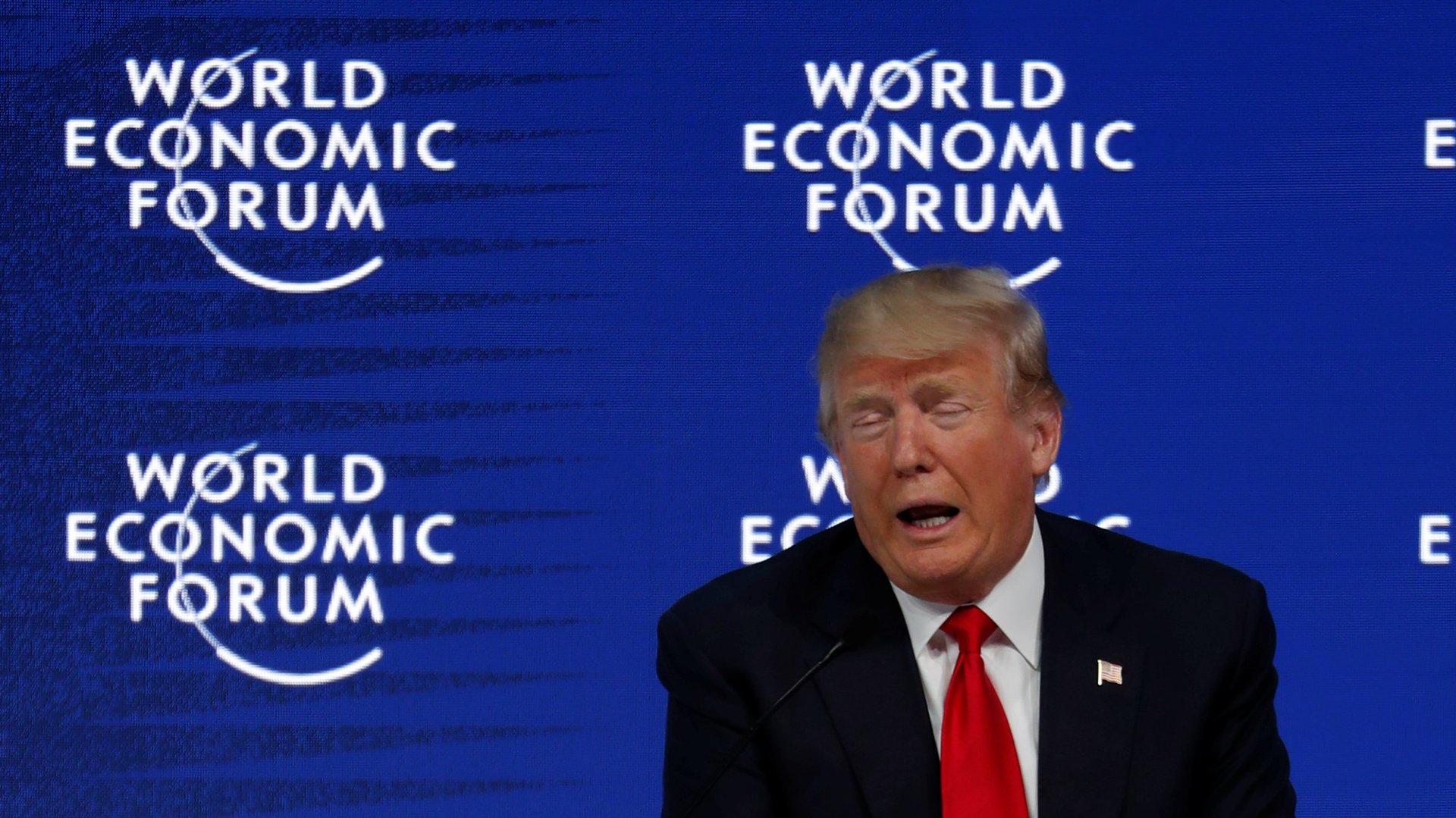Trump doesn’t understand a fundamental truth about trade
Hey, world—Donald Trump wants your investment. “We are creating an environment that attracts capital, invites investment, and rewards production,” the US president declared today (Jan. 26) at the World Economic Forum.


Hey, world—Donald Trump wants your investment. “We are creating an environment that attracts capital, invites investment, and rewards production,” the US president declared today (Jan. 26) at the World Economic Forum.
But just FYI, world: Trump also wants to buy less of your stuff. Earlier this week, Trump slapped tariffs on solar panels and washing machines; other protectionist measures against foreign-made steel will reportedly follow.
Unfortunately for Trump, the realities of economics mean he can’t have it both ways.
Trump’s hope for a deluge of foreign capital directly contradicts his dream of shrinking the US trade deficit. This muddled agenda betrays the Trump administration’s basic misunderstanding of how trade works—ignorance that could wind up hurting American workers.
The core of the Trump administration’s confusion relates to the relationship between flows of trade and capital (i.e. investment), as Michael Pettis, a finance professor at Peking University, argues in Bloomberg.
A country’s trade and capital accounts always balance each other out. Trade surpluses are matched by capital-account deficits. To think about it slightly differently, when a country consumes more stuff than it produces, it obviously must be buying those extra goods and services from other countries. To pay for those net imports, it has to borrow from abroad, since its income is limited to what it earns from its production.
So when a country imports more goods and services than it exports, it’s also automatically true that the inflow of capital from abroad exceeds that country’s investment in other countries. The US has a trade deficit. Conversely, China, Germany, and other countries running chronic trade surpluses are sending more investment overseas than they’re bringing in.
This is why Trump can’t have a smaller trade deficit and more foreign investment: Greater capital inflows to the US imply that America must also run a bigger trade deficit. It’s unavoidable.
In a perfectly open system, no country would run a trade surplus or deficit for more than a few years, since prices would ultimately adjust, restoring balance. But that’s obviously not how things currently work. And since on a global scale, these flows all balance out, changes in one country’s trade and capital flows necessarily influence those of other countries.
Persistent trade imbalances—in which some countries always run deficits, while others always run surpluses—are dangerous because they reflect pockets of unsustainable, and ultimately destructive, economic activity. They imply that surplus countries, like China, are artificially boosting employment while forcing the US and other deficit countries to accept either debt or higher unemployment, or both. (That’s because, when a country runs a trade deficit, that means it’s either borrowing more to finance the net imports, or that its production has gone down—which means people are being laid off.)
Basically, Trump is right that the trade deficit is bad for US workers. But he doesn’t understand that more foreign investment is the flip-side of the trade deficit—and, therefore, it’s also bad for US workers.
Despite what Trump might think, American companies don’t need more investment. They have way too much cash as it is. More foreign investment will wind up hurting the US economy, gushing into assets like real estate or government bonds that don’t create real value—or jobs—by expanding productive capacity. (Even ostensibly productive foreign investment in new US factories don’t necessarily help shrink the trade deficit.)
The perverse thing is, US protectionism could easily worsen this dynamic.
“What’s important to recognize is that the deep trade imbalances afflicting the US in recent years mainly reflect the impunity with which other countries exploit access to its capital account,” Pettis writes. But as he explains in his book The Great Rebalancing: Trade, Conflict, and the Perilous Road Ahead for the World Economy, while protectionist measures used to successfully shrink a country’s deficit, for the last five decades, it’s been the other way around. A tidal bore of global financial flows have been driving countries’ trade imbalances. This is particularly true for the safe haven capital of the global economy, the US, which is forced to sop up around half of all the other countries’ excess capital via foreign investments.
Since Trump’s tariffs hit China hardest, they could stoke greater economic uncertainty there, prompting Chinese capital flight to the US. The expectation that protectionism will lead to heartier American growth—boosted by Trump’s massive corporate tax cut—might also draw more investment into the US.
At Davos just now, Trump vowed that as “president of the United States, I will always protect the interests of our country, our companies, and our workers.” As laudable as that goal might be, it’s sure hard to do if you don’t understand how.